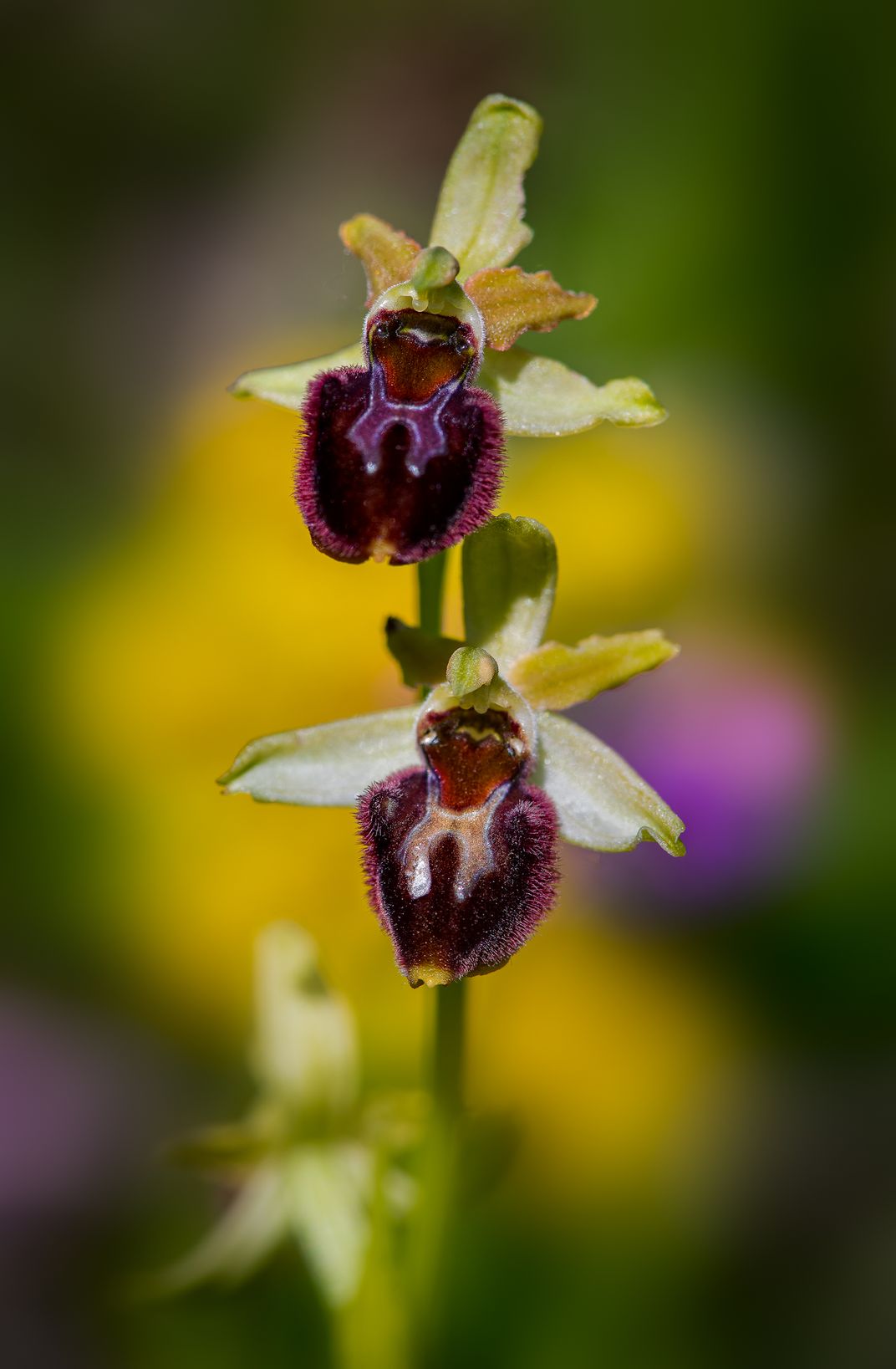The orchid in this image is called Ophrys sphegodes and is part of the Bee Orchids group. The common name (Bee Orchids) is a reference to the labellum (the brown, large petal) that mimics the body of a bee. Moreover, since these orchids do not secrete any nectar, and do not recompense the insects, their pollination is achieved exclusively by mimicry and deceit. In order to attract the male bees (their specific pollinators,) the Ophrys flowers transformed themselves into pseudo-bees, mimicking to perfection the shape, texture, pilosity, colour and smell of various female bees and wasps. These signals stimulate mating behavior in the male pollinators, which then attempt pseudocopulation, with the orchid’s labellum. This pollination strategy, termed as sexual deceptive mimicry, is exclusive to orchids and is one of the most fascinating phenomena of the plant world. While trying to mate with the orchid, the male bees pollinate the flowers, in spite of being completely ignored by the pseudo-females. Disappointed, they take off eager to find a more interested female. However, in most cases, due to their naivety and short memory, the male bees usually land on another Bee Orchid flower, deceived again by its irresistible ‘great looks’ (Orchids of Romania, by Nora De Angelli & Dan Anghelescu, 2020).
| Date Taken: | 04.2021 |
| Date Uploaded: | 11.2022 |
| Photo Location: | Tinăud, Romania |
| Copyright: | © Nora De Angelli |

